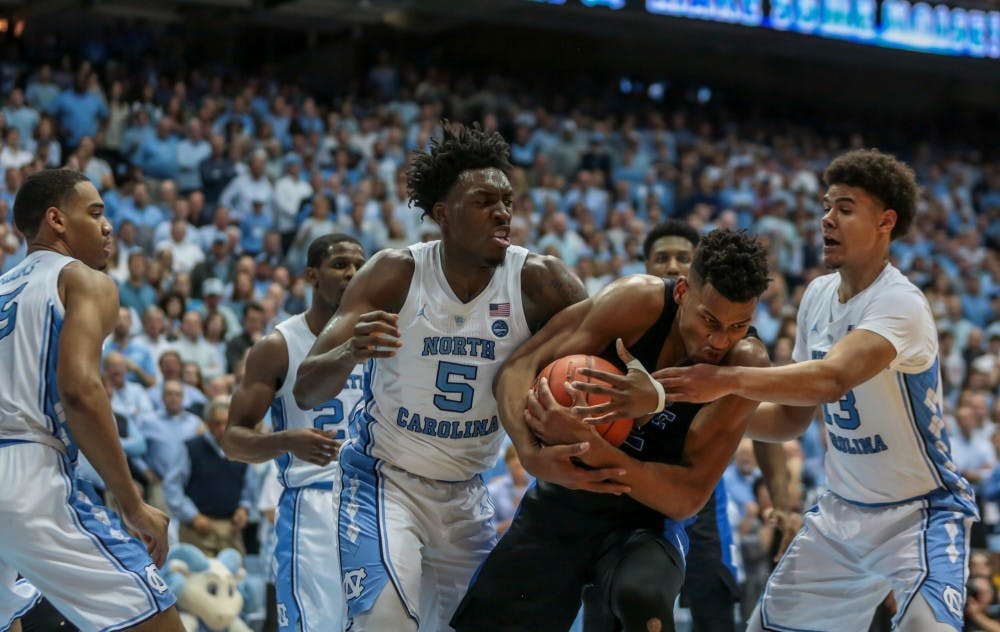A year ago, North Carolina men's basketball had one consensus lottery pick, Nassir Little. The 6-foot-6 forward was a projected top-five pick lottery by most NBA draft boards and ready to take the league by storm. He just needed to do one thing – complete one mandatory year removed from high school, which he chose to do at UNC.
A year later Little wasn’t a top five pick, he wasn’t a top 10 pick, he wasn’t even a lottery pick. Little spent most of draft night staring at the big screen, watching team after team pass on him, eventually going No. 25 overall to the Portland Trailblazers.
Meanwhile, two of Little’s UNC running mates – Coby White and Cameron Johnson – entered the season with low draft expectations. Most experts pegged Johnson as an early second round pick and did not have White listed as a draftee.
Both were lottery picks, with White going No. 7 overall to the Bulls and Johnson going No. 11 overall, ending up with the Suns via trade.
The dichotomy begs questions. How did this happen? Whom is to blame? Whom is to credit?
For a portion of the college basketball fanbase the focus shifted immediately to head coach Roy Williams. After all, Williams hasn't landed as many top tier NBA talents as Kentucky’s John Calipari or Duke’s Mike Krzyzewski. Under Williams, only five Tar Heels have bolted for the NBA after a single season: Marvin Williams, Brandan Wright, Tony Bradley, White and Little.
Defenders of Williams will point to White and Johnson as proof that Williams can develop talent if given the chance.
Naysayers will point to Little’s perplexing draft night to hammer home the belief Williams is incapable of developing top tier talent.



